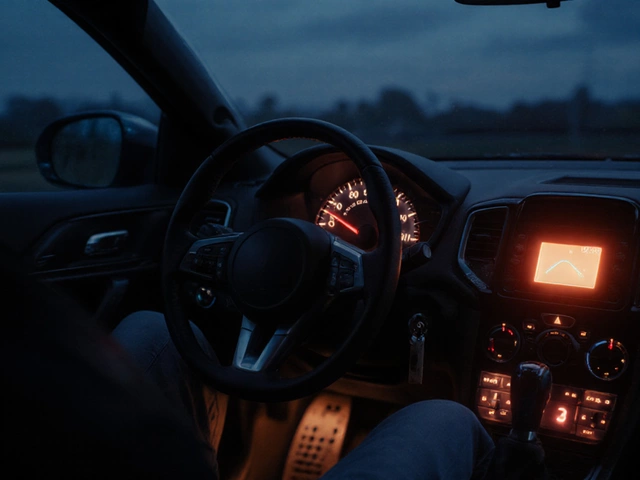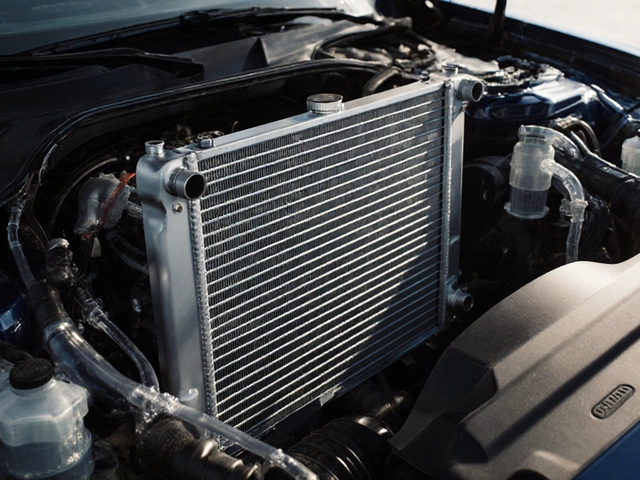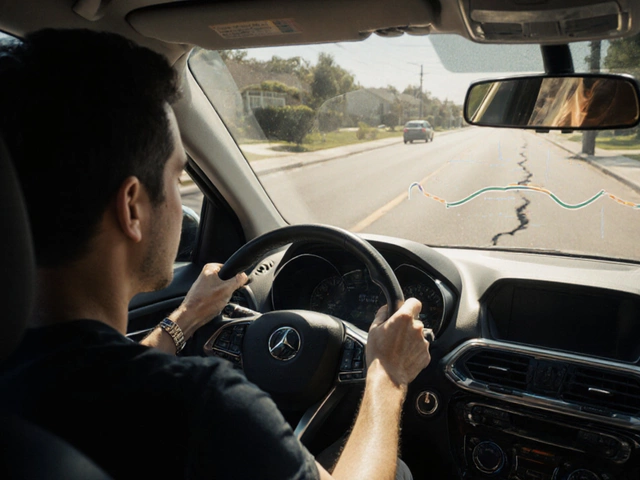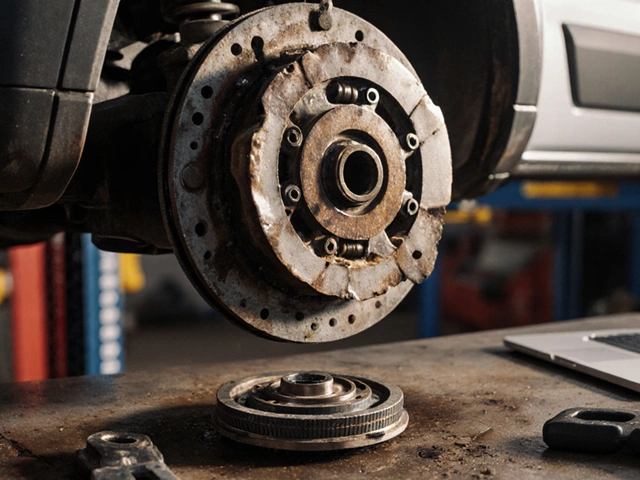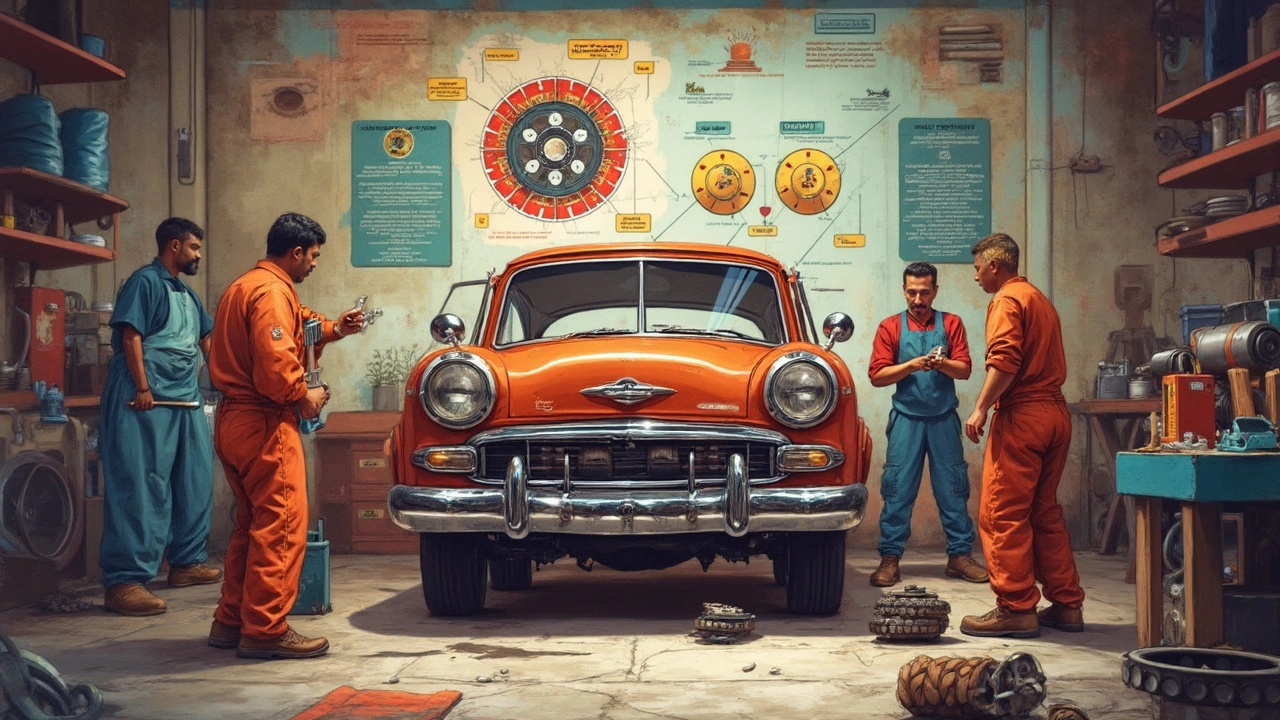
So, your car's clutch finally gave up—bummer. You knew this day was coming, but replacing a clutch involves more than just swapping out the old part for a sparkly new one. To make sure you're not back at the mechanic anytime soon, there are some other parts you should be looking at as well.
First, it's not just about the clutch itself. While you're at it, seriously consider changing out the flywheel. If it's worn or damaged, it can affect the performance of your new clutch and make your ride anything but smooth.
Then there's the release bearing, a part that you'd rather not have fail right after you think you're done with repairs. This little guy plays a pretty big role in the system, so don't skimp when it comes to checking its condition.
- Why Replacement Isn't Just the Clutch
- Key Parts to Consider
- The Role of the Flywheel
- Inspecting the Release Bearing
- Don't Forget the Pilot Bearing
- Keeping Your Transmission Happy
Why Replacement Isn't Just the Clutch
When your clutch is on its last legs and you finally take the plunge to replace it, don't just stop there. The clutch system is like a domino effect—change one thing, and others might follow in needing attention. From the flywheel to the pilot bearing, there’s quite a bit connected to that seemingly simple clutch job.
An article from Car and Driver rightly points out, "Replacing just the clutch without paying attention to related components is like fixing a leaky roof and ignoring the water damage underneath."
Understanding the Clutch System
The clutch in your car works hard, linking the engine to the transmission and dealing with the stress of power transfers. It's not an isolated player; it relies on several components. Ignoring the associated parts can lead to early wear and tear of your new clutch kit. This isn't just about being proactive—it's about being smart.
- Flywheel: This part interacts directly with the clutch and can get uneven surfaces over time, leading to vibrations and premature clutch wear.
- Release Bearing: Without smooth operation, you might experience a grinding noise when shifting gears. Always check its condition.
- Pilot Bearing: This supports the transmission input shaft. If it’s worn out, expect some odd noises and potential transmission issues.
By paying attention to these components, you ensure the longevity and performance of both the new clutch and your vehicle. And if you're not one for surprises—which let's face it, who is—this proactive approach can save unexpected trips to the repair shop.
Consider this approach your behind-the-scenes insurance for car maintenance. Not only will it enhance the life of your clutch, but your overall driving experience will be all the better for it.
Key Parts to Consider
When you're knee-deep in the process of a clutch replacement, there are a few other key components you should give a good, hard look. Missing these can mean your car won't be running as smoothly as it could, or worse—you'll be back in the shop sooner than you'd like.
Flywheel
The flywheel is crucial. This disc connects to the rear of the engine and the clutch, providing the necessary momentum to keep your engine running. Over time, it can develop hot spots or warping, which leads to vibrations or uneven wear on your new clutch. A resurfacing or even a potential replacement is often recommended.
Release Bearing
The release bearing, also known as the throw-out bearing, deserves attention next. Its main job is to disengage the clutch when you press down on the pedal. If it's worn out, you might hear strange noises or feel vibrations, even with a new clutch. So, while you’re in there, swapping it out can save a lot of hassle down the road.
Pilot Bearing
Often overlooked, the pilot bearing or bushing supports the transmission input shaft. If it wears out, it can cause your transmission to misalign, resulting in serious damage. It’s a small part, but swapping it during a clutch kit install is a wise move.
Clutch Fork and Pivot Ball
The clutch fork and pivot ball might look sturdy, but don't be fooled. The fork applies force to the clutch linkage, and a worn pivot ball can cause clutch failure again all too soon. Tossing in new ones while the transmission is out is a piece of cake and saves future trouble.
Last but not least, always check whether the hydraulic components like the master and slave cylinders are in tip-top shape. Any leaks or loss of pressure can mean the whole replacement was for nothing.
The Role of the Flywheel
When you're diving into clutch replacement, the flywheel isn't just a bystander. It's a key player in ensuring your car starts smoothly and shifts gears without a hitch. But what does this piece actually do? Well, in simplest terms, the flywheel helps store rotational energy, making the engine run more steadily.
Now, here's the kicker—when the flywheel gets rough around the edges (literally, if it's worn out), it doesn’t just affect your clutch. It impacts the whole driving experience. A worn flywheel can lead to strange vibrations and even damage a new clutch prematurely.
Why Check the Flywheel?
One major reason to check the flywheel during a clutch replacement is to prevent future headaches. Because replacing just the clutch without looking at the flywheel could lead to uneven surfaces. This unevenness can cause slipping and might force you back under the hood much sooner than you'd like.
While machining a flywheel is an option to make it smooth again, often it's more cost-effective in the long run to replace it, especially if you're already splurging on a shiny new clutch kit.
Signs Your Flywheel Needs Attention
- Excessive vibration when the vehicle is in gear.
- Clutch slipping or unusually high-pitched noises when shifting.
- Burn marks or visible damage on the flywheel surface.
If you notice any of these, don't ignore them. A healthy flywheel means a healthy vehicle repair and less time worrying about your ride's reliability. It's like ensuring all the puzzle pieces fit right, making your driving smooth as silk.
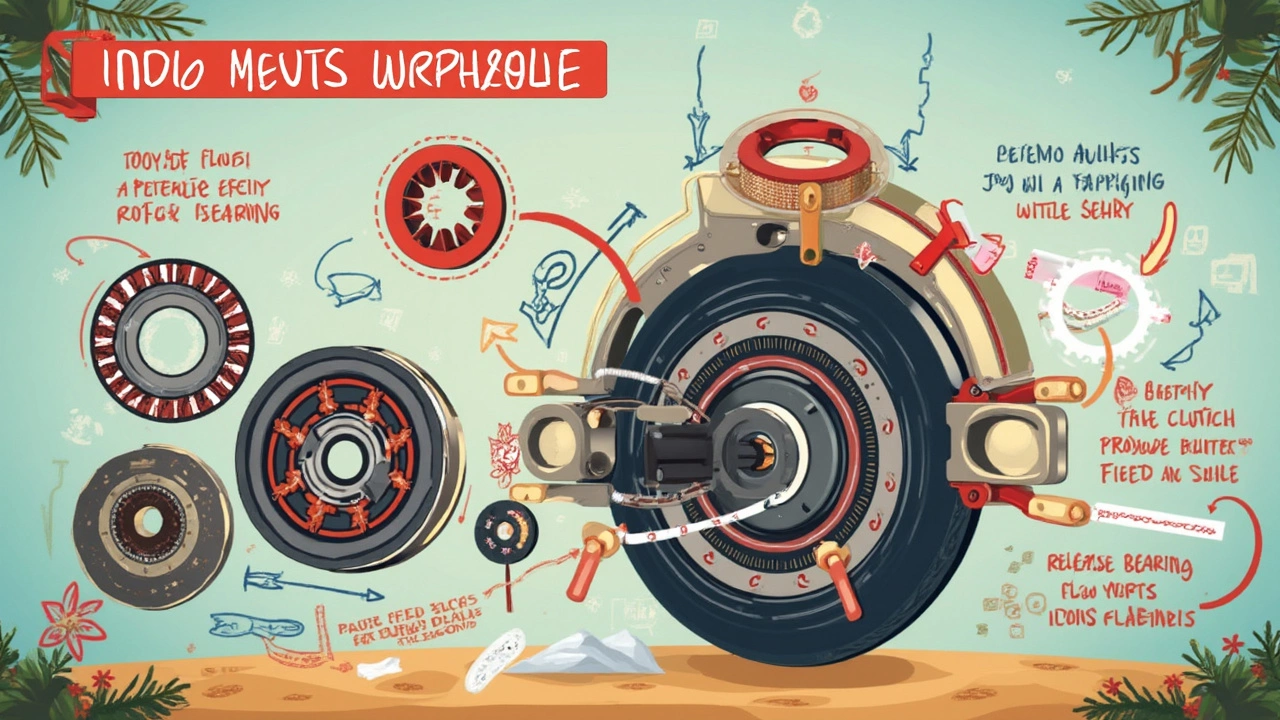
Inspecting the Release Bearing
Alright, let's talk about the release bearing because it’s way more crucial than its size might suggest. This component is what lets the clutch engage and disengage smoothly. If you’ve ever felt a weird vibration in your clutch pedal, that’s often a sign that the release bearing is having a bad day.
Here’s the deal. When replacing the clutch, you really don’t want to overlook the release bearing, especially since it’s typically right there with the clutch. It makes sense to swap it out for a new one to save yourself future headaches—and possibly another trip under the car.
Signs of a Bad Release Bearing
Recognizing when the release bearing is on its last legs can save you trouble. Listen for these:
- Noise when pressing the clutch pedal: A chirping or grinding sound is an early warning.
- Difficulty in shifting gears: If shifting feels a tad rough, it might be your release bearing shouting for help.
- Vibrations: Buzzing under your foot when you press the clutch? Yeah, that’s not a good sign.
Why Replace It?
A damaged release bearing can lead to bigger problems—not only can it wear out other parts, but it can also cause bigger failures in the clutch system itself. So, when you’re already deep in the clutch replacement process, it’s wise to replace the release bearing.
It’s that simple: keeping an eye on and replacing these clutch-related components, like the release bearing, is key to a happy, smooth-driving vehicle. It's like giving your car an upgrade, ensuring everything works together harmoniously.
Don't Forget the Pilot Bearing
When replacing a clutch, the pilot bearing can easily slip under the radar, but it's a component you don't want to overlook. This small but mighty part sits within the engine’s crankshaft, and its main job is to support the front end of the transmission’s input shaft. Sounds technical, but think of it as the unsung hero, silently keeping everything aligned.
What happens if the pilot bearing goes bad? While the main function is to offer support and alignment, if it wears out, you might start hearing some unpleasant noises like grinding or whining when your car is in neutral. Worse, it can lead to unnecessary vibration or even transmission damage—which nobody wants.
Signs Your Pilot Bearing Needs Attention
- Unusual noises when the car is idle or you engage the clutch.
- Vibrations while driving, especially noticeable during shifts.
- Difficulty shifting gears surprisingly becomes a norm.
If any of these symptoms are familiar, it might be time to replace your pilot bearing along with the clutch.
While you're at it, the good news is that pilot bearings are quite affordable compared to some other parts, and swapping them during a clutch overhaul can save you on labor costs down the road—it'll spare you from having to open up the transmission again.
| Component | Average Cost (USD) |
|---|---|
| Pilot Bearing | 10 - 30 |
| Labor (if done separately) | 200 - 400 |
In a nutshell, don’t skimp on the pilot bearing when you’re tackling the clutch replacement. It’s one of those things where a little preventive care can go a long way in keeping your car running smooth and avoiding extra costs.
Keeping Your Transmission Happy
Your gearbox is another critical component in the whole clutch replacement process. While it might not be the star of the show, making sure your transmission isn't being neglected can prevent some serious headaches down the road.
One of the ways you can ensure everything's going well is by checking over the transmission's input shaft seal. If this is leaking, you're looking at potential fluid loss, which won't do your new clutch any favors. Replacing this seal when you do your clutch replacement can nip issues in the bud.
Transmission Fluid Change
Don't forget about the transmission fluid. Over time, this fluid can break down, affecting how smoothly your transmission and new clutch communicate. A fresh fill after replacing the clutch can improve your ride's performance. Make sure you're using the right type specified for your vehicle.
Check for Any Wear and Tear
While you're at it, take a look at the transmission mount. A worn mount can lead to vibration and unwanted noise, which nobody wants. Replacing it if it's on its last legs can keep things running quietly and smoothly.
Look Out for Transmission Leaks
An easy way to check for leaks is by looking for spots on your driveway or parking space. Catch these leaks early, and you’ll save yourself some costly repairs later.
Doing these additional checks and changes not only complements your clutch replacement but also keeps your vehicle repair game strong.
